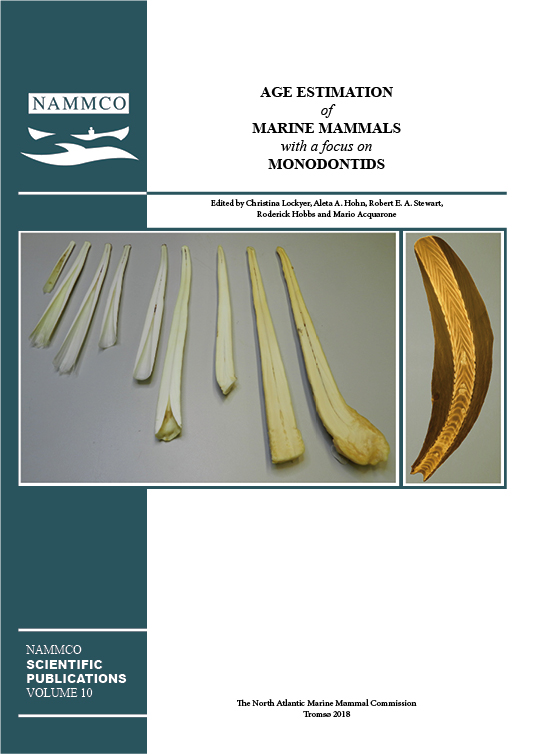Validation of dentine deposition rates in beluga whales by interspecies cross dating of temporal δ13C trends in teeth
DOI:
https://doi.org/10.7557/3.3196Abstract
Isotopic time series from sequentially sampled growth layer groups (GLGs) in marine mammal teeth can be combined to build chronologies allowing assessment of isotopic variation in marine ecosystems. Synchronous recording of baseline isotopic variation across dentinal GLGs of species with temporal and spatial overlap in foraging offers a unique opportunity for validation of marine mammal age estimation procedures through calibration of GLG deposition rates in one species against another whose GLG deposition has been independently determined. In this study, we compare trends in stable carbon isotope ratios (d13C) across dentinal GLGs of three eastern Canadian Arctic (ECA) beluga (Delphinapterus leucas) populations through the 1960s-2000s with a d13C time series measured across dentinal GLGs of ECA/Northwest Atlantic killer whales (Orcinus orca) from 1944-1999. We use confirmed annual GLG deposition in killer whales as a means to assess beluga GLG deposition, and show linear d13C declines across chronologies of both species were statistically indistinguishable when based on annual GLG deposition in beluga whales, but differed when based on biannual deposition. We suggest d13C declines reflect the oceanic 13C Suess effect, and provide additional support for annual GLG deposition in beluga whales by comparing rates of d13C declines across beluga GLGs with published annual d13C declines attributed to the oceanic 13C Suess effect in the North Atlantic.





